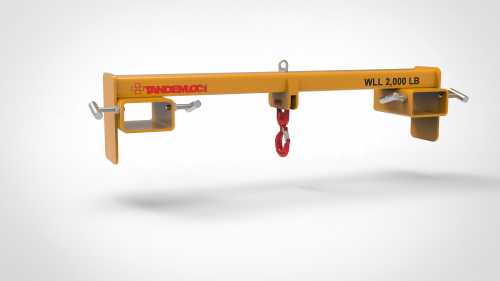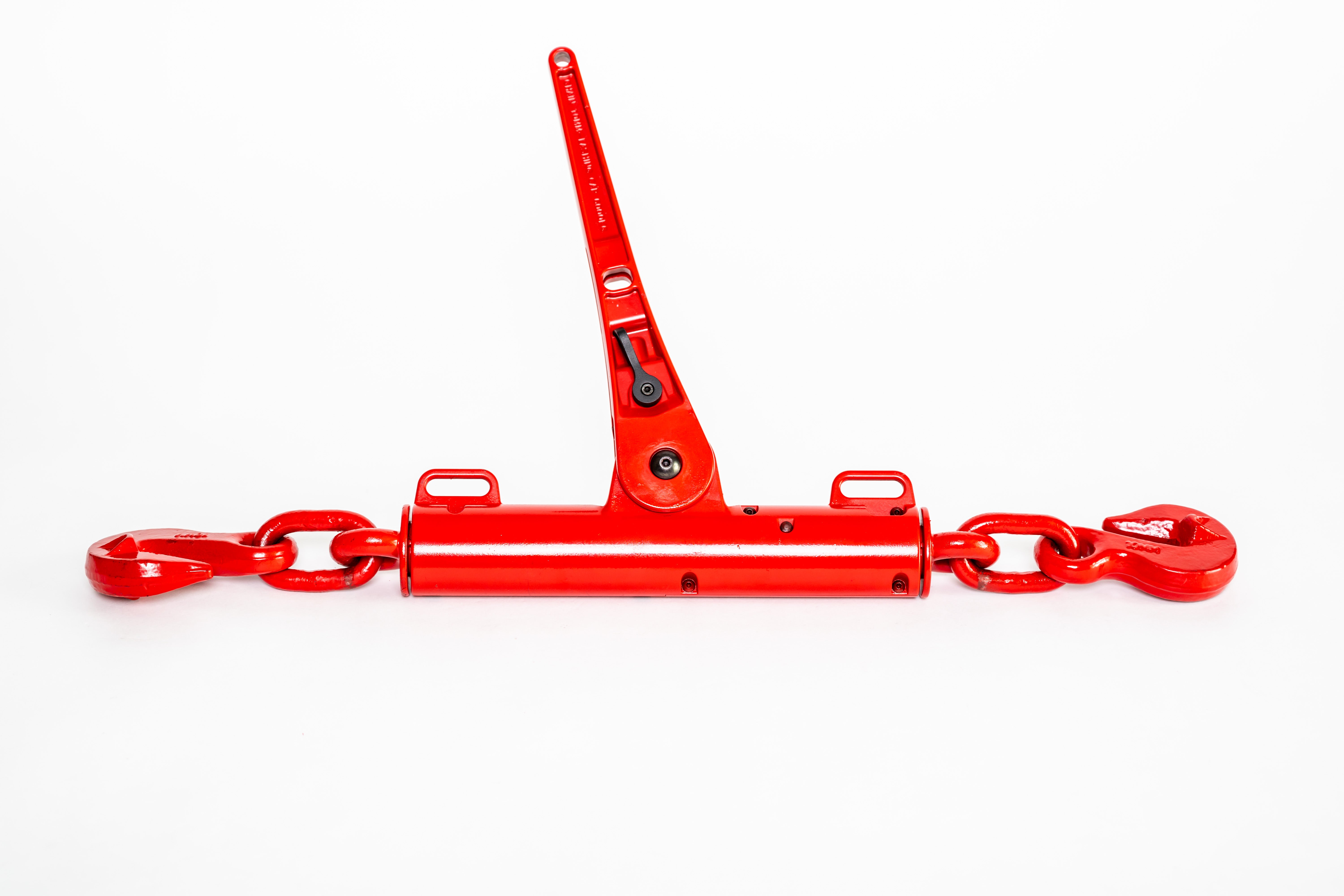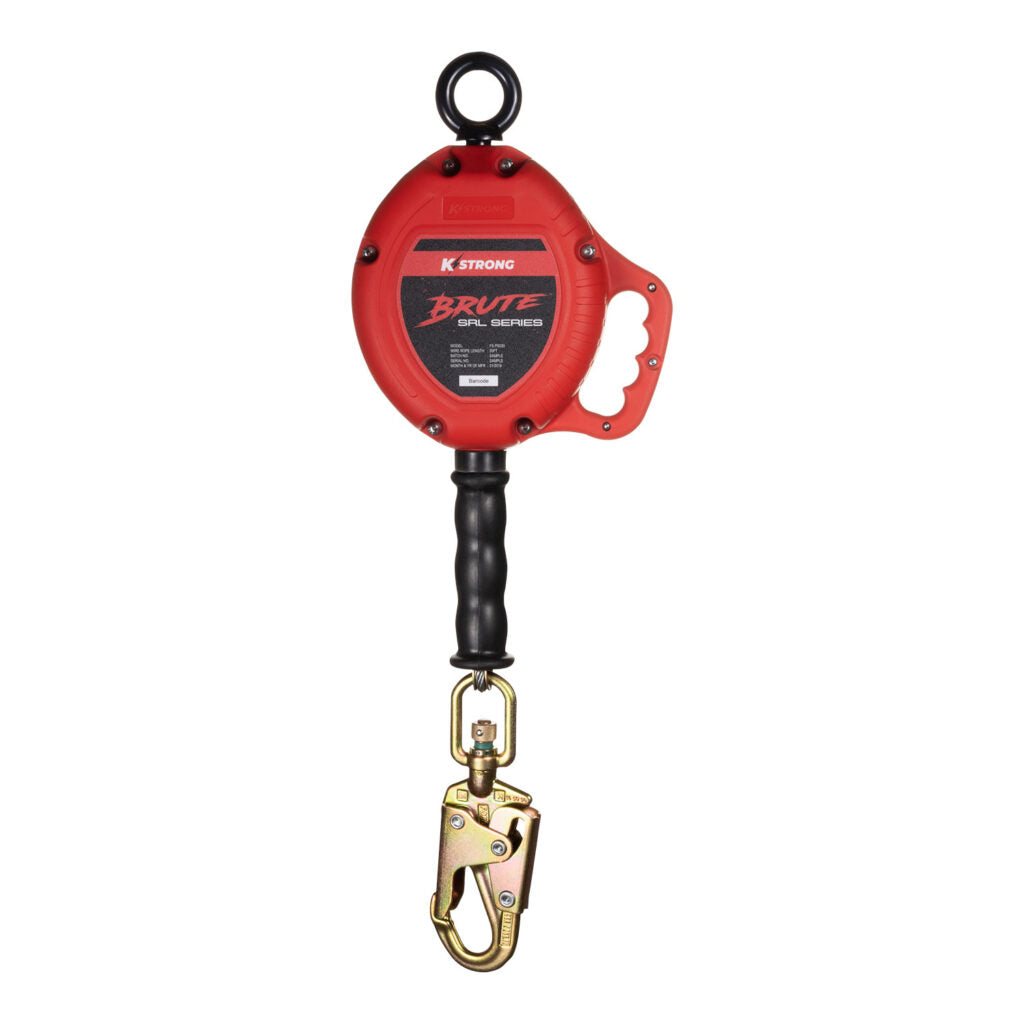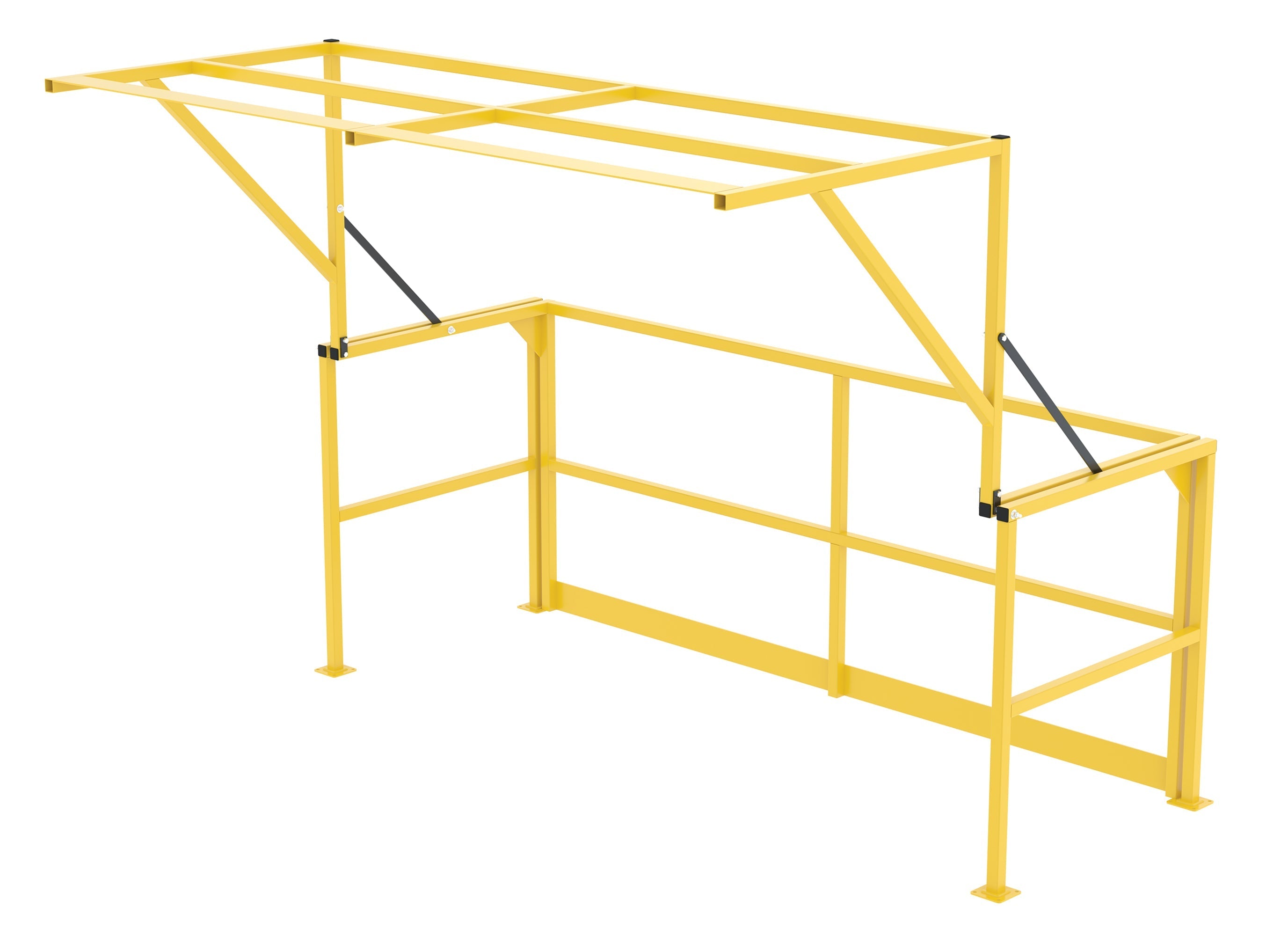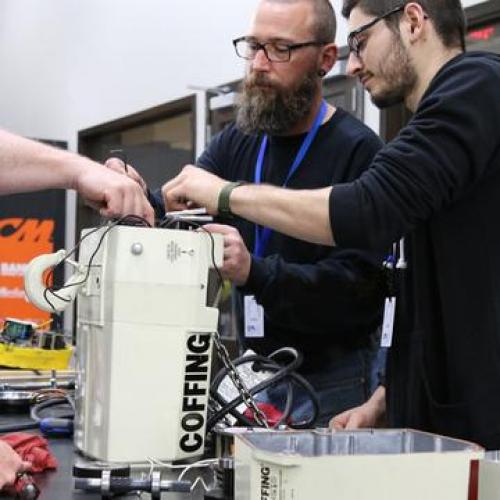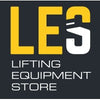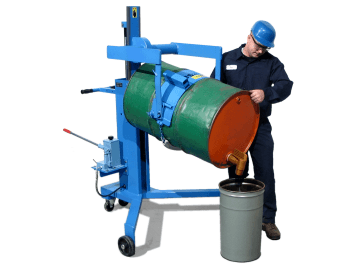WHAT IS DRUM HANDLING EQUIPMENT?
A drum handler is a mechanism used to securely grip, lift and move various types of drums, pails, cans, and kegs – including steel barrels, plastic, and fiber. It has spring-loaded metal arms that create a tight and secure grip on the barrel of the drum.
 ADVANTAGES OF DRUM HANDLING EQUIPMENT
ADVANTAGES OF DRUM HANDLING EQUIPMENT
- Drum handling equipment is a great way to improve your company’s efficiency. Without the right tools, it can take a lot more time and effort to prepare, lift and transport incredibly heavy drums. Drum handling equipment eliminates the need to have strong and enduring workers who can manually handle drums, allowing for faster, safer, and overall better handling. If employees spend less time struggling to move heavy loads, there is more time to spend on completing the job to a high standard.
- They also reduce the potential for dangerous accidents, creating a safer work environment for your workers. With drums holding quantities as large as 55 gallons, heavy drums can be cumbersome and even dangerous to maneuver. This is particularly the case when the drums are filled with hazardous materials. Moving a full drum manually can lead to serious injuries, accidents, and spills. Using the proper drum handling equipment, you can increase efficiency while also protecting your employees, goods, and the worksite.
- By reducing the potential for accidents, you can improve the quality of your product since there will be less risk of the product being damaged during handling.
- Drum handling equipment can also help operators to save themselves from sustaining stress injuries by picking up, moving, and releasing heavy loads. If injuries in the workplace are reduced, there will be a domino effect of reducing injury claims and time taken off of work – this will save the company money in the long run, but also instill more confidence among employees.
TYPES OF DRUM HANDLING EQUIPMENT
Grabs – offered in single and double capacity – allow goods to be lifted and moved across long distances. The name “grabs” comes from the fact that these drum handlers can grab barrels by wrapping around the middle. They can also grip the top of the rim in a technique known as a rim grab or gator grip. They are versatile and can lift drums both horizontally and vertically. The grab attachment simply slips over the forks of a regular forklift.
Mixers/Rotator
This machine is used to mix and blend the contents of barrels wherein separation of the product during production is likely. They are perfect for reducing the need for clean-ups, as well as for ridding your workplace from contaminants.
Mixers/Rotators come in two types: a roller, or a tumbler.
Roller: continuously rolls a barrel on its horizontal axis to gently mix the contents inside. E.g., cement mixers
Tumbler: continuously rolls a barrel on its vertical axis – one end over the other – for a more vigorous mix.
Often stored on top of pallets, palletizers have V-shaped legs that can maneuver around the sides and corners of pallets, making them a great choice for positioning and removing drums with ease. They can grab drums by the top rims to simply lift and reposition them, or alternatively, they can wrap around the middle of the drum to tilt and pour the contents. Palletizers can either be manually operated with a pumping handle or battery-powered with controls.
As the name suggests, these pourers – also known as tippers, tilters, or dumpers – raise drums vertically to pour out the contents. They allow operators to safely pour hazardous goods from a safe distance, with complete control over the pouring angle and height.
There are two types of vertical-lift pourer:
- A single-stage vertical-lift pourer, which allows operators to pour from up to 60” high.
- A two-stage vertical-lift pourer, which allows operators to pour goods from up to 106” high.
Vertical-lift pourers also come in several configurations:
- Power lift with power tilt, which uses a motor-powered hydraulic lift and tilt
- Power lift with manual tilt, which uses a motor-powered hydraulic lift as well as a hand crank or pull crank for tilting the drum
- Manual lift with manual tilt, which uses a hand pump for lifting as well as a hand crank or pull crank for tilting the drum
Movers
Movers are a cost-effective option for moving goods that don’t need to be poured or mixed. There are a few different types of movers:
Dollies: these small carts are ideal for moving through narrow aisles. They have rolling castors that the drum sits on top of, and once the goods have arrived at their destination, a lifter is required to lift the drum off of the dolly.
Trucks/Trollies: trucks can pick up and roll drums around in one movement. They usually have 2 to 4 wheels – with more wheels meaning that the operator has less weight to support.
Cradles: cradles carry drums on their side for pouring or other uses. They can also act similarly to a truck/trolley by lifting drums vertically and then rolling them into a horizontal position. Some cradles are not equipped to lift on their own, so in this case, a lifter must be used.


